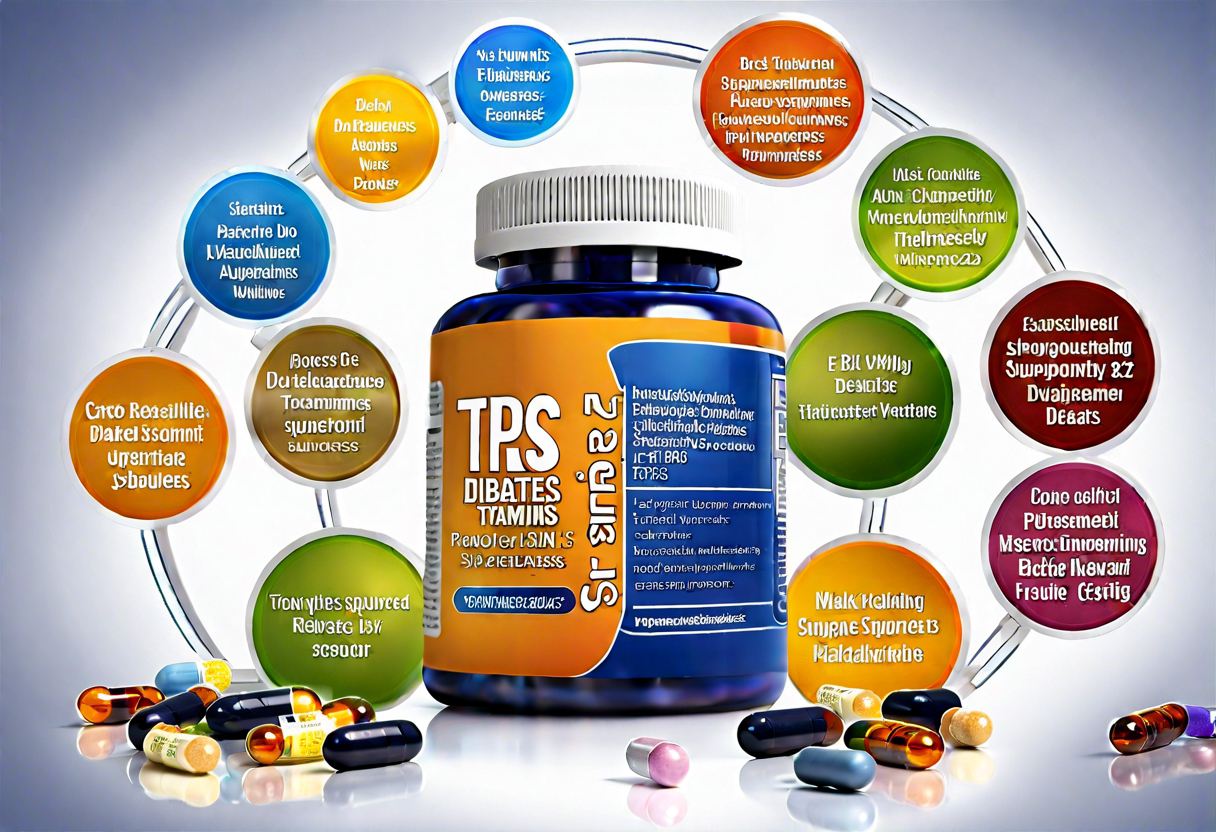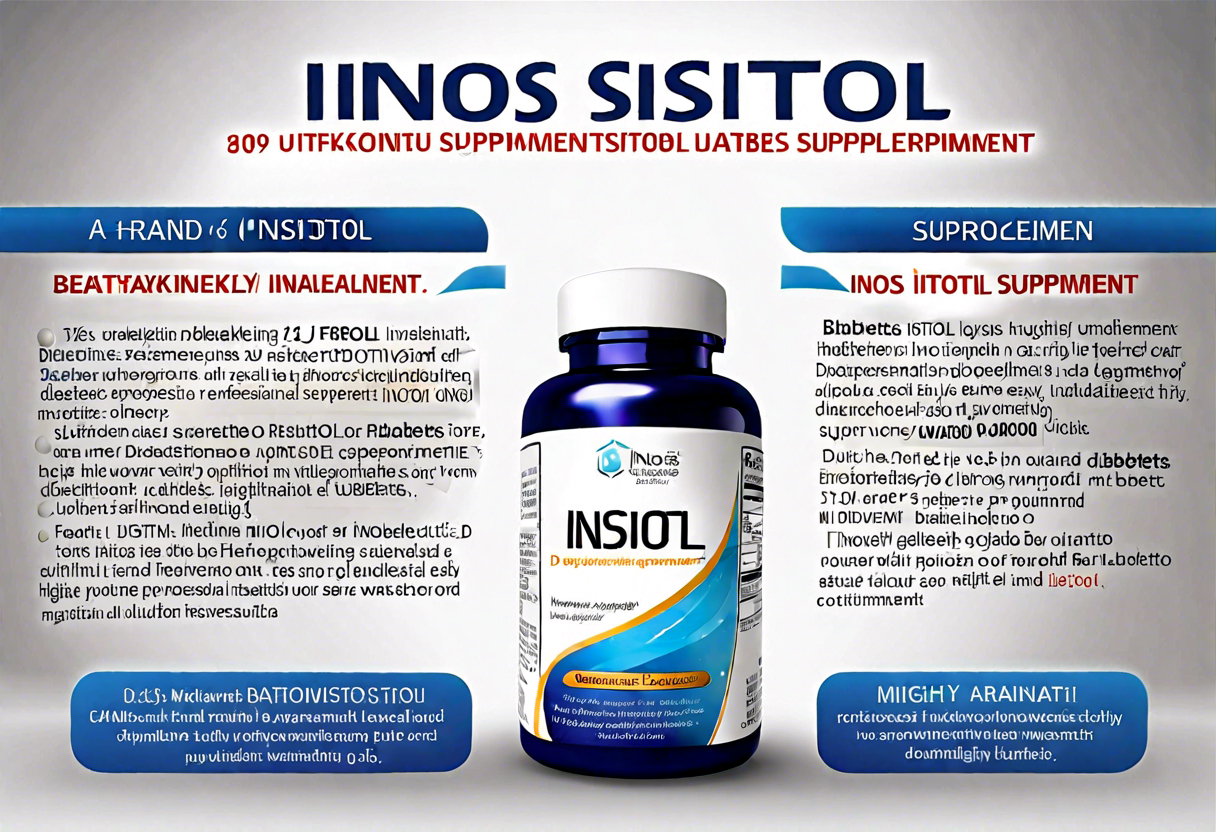The Importance of Blood Sugar Monitoring in Managing Type 2 Diabetes
Blood sugar monitoring plays a crucial role in effectively managing type 2 diabetes. By regularly checking your blood sugar levels, you can gain valuable insights into how your body is responding to certain foods, medications, and lifestyle choices. This information allows you and your healthcare team to make informed decisions about your diabetes management plan and adjust it accordingly.
When you have type 2 diabetes, your body struggles to maintain healthy blood sugar levels. Monitoring your blood sugar helps you identify patterns and trends, giving you a better understanding of how different factors affect your levels. This knowledge empowers you to take proactive steps to keep your blood sugar within target ranges and reduce the risk of complications.
The frequency of blood sugar monitoring may vary from person to person, depending on their unique circumstances and treatment plan. However, it is generally recommended to check your blood sugar levels multiple times a day. This may involve monitoring before and after meals, before and after physical activity, and before bedtime.
There are different methods available for blood sugar monitoring, including self-monitoring using a blood glucose meter, continuous glucose monitoring (CGM) systems, and flash glucose monitoring. Self-monitoring with a blood glucose meter involves pricking your finger and placing a small drop of blood on a test strip, which is then inserted into the meter for measurement. CGM systems provide continuous, real-time glucose readings through a small sensor placed under the skin, eliminating the need for frequent finger pricks. Flash glucose monitoring involves scanning a small sensor placed on the back of the upper arm using a reader device to obtain glucose readings.
By regularly monitoring your blood sugar, you can detect and address fluctuations before they become severe. This allows you to make timely adjustments to your diet, exercise routine, and medication regimen. It also helps you identify potential triggers for high or low blood sugar levels, helping you make informed choices about what to eat and how to manage stress.
Effective management of type 2 diabetes requires more than just monitoring blood sugar levels; it also involves interpreting and understanding the readings. Your healthcare team can help you analyze the data from your blood sugar monitoring and guide you in making appropriate adjustments to your treatment plan. They can assess your blood sugar target ranges, help you identify potential problem areas, and provide personalized recommendations for improving your overall glycemic control.
Blood sugar monitoring is a vital component of managing type 2 diabetes. It provides valuable information about your body’s response to various factors, enabling you to make informed decisions about your treatment plan. By incorporating regular blood sugar monitoring into your diabetes management routine and working closely with your healthcare team, you can optimize your glycemic control and reduce the risk of serious complications associated with type 2 diabetes.
The Different Methods of Blood Sugar Monitoring for Individuals with Type 2 Diabetes
Monitoring blood sugar levels is a crucial aspect of managing type 2 diabetes. It allows individuals to track their glucose levels and make informed decisions about their diet, medication, and overall lifestyle choices. There are several methods available for blood sugar monitoring, each with its own unique benefits and considerations.
One common method of blood sugar monitoring is the use of a glucometer. This handheld device measures blood glucose levels by analyzing a small drop of blood obtained through a finger prick. Glucometers are convenient and easy to use, making them a popular choice for self-monitoring. Many glucometers also provide quick results, allowing individuals to take immediate action if their blood sugar levels are too high or too low.
Continuous glucose monitoring (CGM) systems are another method of blood sugar monitoring that has gained popularity in recent years. These systems use a small sensor inserted under the skin to measure glucose levels continuously throughout the day. The sensor transmits real-time data to a receiver or smartphone app, providing users with a comprehensive picture of their glucose trends and patterns. CGM systems can be especially helpful for individuals who experience frequent fluctuations in their blood sugar levels or those who need to closely monitor their levels for medical reasons.
In addition to traditional fingerstick testing and CGM systems, there are newer technologies that offer non-invasive methods of blood sugar monitoring. For example, some devices use a wearable sensor that measures glucose levels through the skin without the need for pricking the finger. These sensors use various technologies such as radio waves, infrared light, or transdermal sensors to detect glucose levels. While these technologies are still being refined and may not yet be as accurate as traditional methods, they hold promise for the future of blood sugar monitoring.
The frequency and timing of blood sugar monitoring can vary depending on the individual’s treatment plan and the recommendations of their healthcare provider. Generally, individuals with type 2 diabetes are advised to check their blood sugar levels regularly, especially before meals, after meals, and before bedtime. This allows for better understanding of how food, physical activity, and medication impact blood sugar levels throughout the day. However, the specific frequency and timing may differ for each individual based on their unique circumstances and treatment goals.
Monitoring blood sugar levels is essential for the effective management of type 2 diabetes. The different methods of blood sugar monitoring, such as glucometers, CGM systems, and emerging non-invasive technologies, offer individuals with type 2 diabetes various options to track their glucose levels. By regularly monitoring their blood sugar, individuals can make informed decisions regarding their diabetes management and take proactive steps to maintain optimal health.
Blood Sugar Monitoring for Effective Management of Type 2 Diabetes
Managing type 2 diabetes requires careful monitoring of blood sugar levels. Regular blood sugar monitoring not only helps individuals with type 2 diabetes stay healthy, but it also aids in identifying patterns and making necessary adjustments to their treatment plan. By keeping a close eye on blood sugar levels, individuals can take proactive steps to better manage their diabetes and prevent complications.
There are various methods available for blood sugar monitoring in type 2 diabetes, allowing flexibility and convenience for individuals. The most common method involves using a blood glucose meter. This handheld device allows individuals to measure their blood sugar levels by pricking their finger with a lancet to obtain a small blood sample. The sample is then placed on a test strip, which is inserted into the meter. Within seconds, the meter displays the blood sugar reading.
Another method is the continuous glucose monitoring (CGM) system. This system utilizes a small sensor placed under the skin to measure glucose levels in the interstitial fluid. The sensor can be worn for several days and provides real-time glucose readings, eliminating the need for frequent finger pricks. CGM systems also have alarms that can alert individuals when their blood sugar levels are too high or too low, helping them take prompt action.
The frequency of blood sugar monitoring is an important aspect of diabetes management. While the recommended frequency may vary based on individual circumstances, it is generally advised to check blood sugar levels regularly throughout the day. This includes before and after meals, before and after exercise, and before going to bed. By monitoring blood sugar at different times, individuals can understand how their body responds to certain foods, physical activity, and medications.
The timing of blood sugar monitoring also plays a crucial role in diabetes management. It is recommended to check blood sugar levels before meals to understand baseline levels and determine appropriate mealtime insulin doses. Postprandial blood sugar monitoring, done after meals, helps individuals assess how their body processes different foods and adjust their diet accordingly. Regular monitoring before bedtime is essential to ensure blood sugar levels are within target range during sleep.
Numerous technological advancements have made blood sugar monitoring more convenient and user-friendly. Modern blood glucose meters have features like memory storage, which allows individuals to track their blood sugar trends over time. Some meters can also wirelessly connect to smartphones or wearable devices, enabling individuals to store and analyze their blood sugar data in dedicated apps. Additionally, integration with insulin pumps or CGM systems can help individuals make informed decisions about insulin dosage adjustments.
Interpreting blood sugar readings is vital to effectively manage type 2 diabetes. Target blood sugar ranges vary depending on individual factors, such as age, overall health, and treatment plan. It is important to consult with a healthcare professional to establish personalized target ranges. Regularly reviewing blood sugar readings, along with lifestyle modifications and medication adjustments, can help individuals maintain optimal blood sugar control and improve their overall well-being.
Blood sugar monitoring is an essential tool in the management of type 2 diabetes. By regularly monitoring blood sugar levels, individuals can take proactive steps to maintain optimal control of their diabetes and prevent complications. With the availability of various monitoring methods and technological advancements, individuals have more flexibility and convenience in monitoring their blood sugar. By understanding and interpreting blood sugar readings, individuals can make informed decisions about their treatment plan and achieve better overall diabetes management.
Blood Sugar Monitoring in Type 2 Diabetes: Technology and Devices
Blood sugar monitoring plays a crucial role in the management of type 2 diabetes. It allows individuals to track their blood glucose levels and make informed decisions about their diet, medication, and lifestyle choices. With advancements in technology, there are now several devices available that make blood sugar monitoring easier and more convenient for people with type 2 diabetes.
One of the most common devices used for blood sugar monitoring is a blood glucose meter. This portable device measures blood glucose levels using a small blood sample obtained from a finger prick. The sample is placed on a test strip inserted into the meter, and within seconds, the device provides an accurate blood glucose reading. Blood glucose meters are compact, affordable, and easy to use, making them a popular choice for individuals managing type 2 diabetes.
Continuous glucose monitoring (CGM) systems are another technological advancement in blood sugar monitoring. CGM systems consist of a small sensor placed under the skin, usually on the abdomen, and a transmitter that sends real-time glucose readings to a receiver or a smartphone. These devices provide continuous monitoring of blood sugar levels, allowing individuals to see trends and fluctuations throughout the day. CGM systems are particularly useful for individuals who experience frequent highs or lows in their blood sugar levels or for those who have difficulty maintaining stable blood glucose levels.
In recent years, wearable devices and smartwatches have also entered the market for blood sugar monitoring. These devices use optical sensors to measure blood glucose levels non-invasively, without the need for finger pricks. While the accuracy of non-invasive blood sugar monitoring is still being improved, these devices show promise as a convenient and painless option for monitoring blood sugar levels.
Some blood sugar monitoring devices also come with software or apps that help individuals analyze and interpret their readings. These tools may provide features such as glucose trend graphs, daily averages, and reminders for medication or exercise. By using these technologies, individuals with type 2 diabetes can gain a better understanding of their blood sugar patterns and make necessary adjustments to their management plan.
It is important to note that while technology has greatly improved blood sugar monitoring, self-monitoring is not a substitute for regular medical check-ups. It is still essential for individuals with type 2 diabetes to have regular consultations with their healthcare provider, who can provide guidance and support in managing their condition.
Technology has revolutionized blood sugar monitoring for individuals with type 2 diabetes. From traditional blood glucose meters to continuous glucose monitoring systems and wearable devices, there are now a variety of options available to help individuals track their blood sugar levels effectively. These devices, paired with software and apps, empower individuals to make informed decisions and achieve better diabetes management. However, it is crucial to remember that regular medical check-ups and consultations with healthcare professionals remain an important part of managing type 2 diabetes effectively.
Interpreting and Understanding Blood Sugar Readings for Effective Management of Type 2 Diabetes
For individuals living with type 2 diabetes, monitoring blood sugar levels is a crucial part of managing their condition effectively. By understanding and interpreting blood sugar readings, patients can make informed decisions about their lifestyle choices and medication requirements. This article will provide insight into how to interpret blood sugar readings for effective management of type 2 diabetes.
Blood sugar readings are typically measured in milligrams per deciliter (mg/dL) and can fluctuate throughout the day. Normal blood sugar levels for individuals without diabetes usually range between 70 and 130 mg/dL before meals, and below 180 mg/dL after meals. However, for people with type 2 diabetes, maintaining blood sugar levels within a target range is essential to prevent complications and maintain overall health.
The first step in interpreting blood sugar readings is to understand the target range set by healthcare professionals. This range may vary depending on individual factors such as age, overall health, and presence of other medical conditions. Consulting with a healthcare provider is crucial in determining the appropriate target range for each individual.
Once the target range is established, individuals with type 2 diabetes can start monitoring their blood sugar levels regularly. Self-monitoring is typically done using a glucose meter, which requires a small blood sample usually obtained by pricking the finger with a lancet. The glucose meter then provides a reading of the blood sugar level, which can be recorded and tracked over time.
Interpreting blood sugar readings involves comparing the measured value to the target range. If the reading falls within the target range, it indicates that blood sugar levels are well-controlled. However, if the reading is consistently above or below the target range, adjustments may be necessary.
Consistently high blood sugar levels (hyperglycemia) can signal the need for lifestyle changes, such as adjusting the diet, increasing physical activity, or modifying medication dosages. On the other hand, consistently low blood sugar levels (hypoglycemia) may indicate the need for adjustments to medication dosages or timing, as well as the need for immediate treatment to raise blood sugar levels, such as consuming glucose tablets or gel.
It’s important to note that blood sugar readings can also be influenced by factors such as stress, illness, and certain medications. By being aware of these potential influences, individuals can better understand and interpret their blood sugar readings. Regular communication with healthcare providers is crucial for discussing any concerns or patterns identified through blood sugar monitoring.
Interpreting and understanding blood sugar readings is vital for the effective management of type 2 diabetes. By monitoring blood sugar levels regularly, individuals can make informed decisions about their lifestyle choices and medication requirements. By staying within the target range provided by healthcare professionals, individuals with type 2 diabetes can minimize the risk of complications and maintain optimal health. Remember to consult with healthcare providers for personalized guidance and support in managing blood sugar levels effectively.
Conclusion
Blood sugar monitoring plays a crucial role in the effective management of type 2 diabetes. By regularly monitoring blood sugar levels, individuals with diabetes can make informed decisions about their lifestyle choices, medication dosage, and dietary preferences.
There are various methods available for blood sugar monitoring, including self-monitoring through fingerstick testing, continuous glucose monitoring systems (CGMs), and flash glucose monitoring. Each method has its advantages and limitations, allowing individuals to choose the one that best suits their needs and preferences. Fingerstick testing provides instantaneous results but requires frequent testing throughout the day, while CGMs and flash glucose monitoring offer continuous monitoring and real-time data, reducing the need for manual checks.
Frequency and timing of blood sugar monitoring play a significant role in diabetes management. It is recommended for individuals with type 2 diabetes to closely monitor their blood sugar levels, especially after meals, before physical activity, and during times of illness or stress. The frequency may vary depending on individual circumstances, such as treatment plans or specific health goals. Consulting with a healthcare professional can help determine the ideal monitoring intervals and times.
Advancements in technology have revolutionized blood sugar monitoring for individuals with type 2 diabetes. Glucometers, CGMs, and flash glucose monitoring devices have become more accurate, user-friendly, and convenient. These devices often come with features like alarms, data storage, and trend analysis, empowering individuals to track their blood sugar levels comprehensively. Moreover, smartphone applications synced with monitoring devices can provide additional insights and support, further enhancing diabetes management.
Understanding and interpreting blood sugar readings is essential for individuals with type 2 diabetes. A blood sugar reading indicates the glucose concentration in the blood at a specific moment. High blood sugar levels (hyperglycemia) can be an indication of inadequate medication, poor dietary choices, or insufficient physical activity. On the other hand, low blood sugar levels (hypoglycemia) can result from excessive medication dosage, skipping meals, or engaging in vigorous exercise without proper preparation. Regular monitoring and understanding the patterns of blood sugar fluctuations help individuals to make necessary adjustments to their diabetes management plan.
Blood sugar monitoring for type 2 diabetes is a critical aspect of successful diabetes management. Different monitoring methods, such as fingerstick testing, CGMs, and flash glucose monitoring, offer individuals with diabetes options to track their blood sugar levels effectively. Frequency and timing of monitoring should be tailored to individual needs, and advancements in technology have made monitoring devices more accurate and convenient. Interpreting and understanding blood sugar readings allows individuals to make necessary lifestyle changes and medication adjustments for optimal diabetes management. By embracing regular blood sugar monitoring, individuals with type 2 diabetes can better control their condition and lead a healthier, more fulfilling life.









